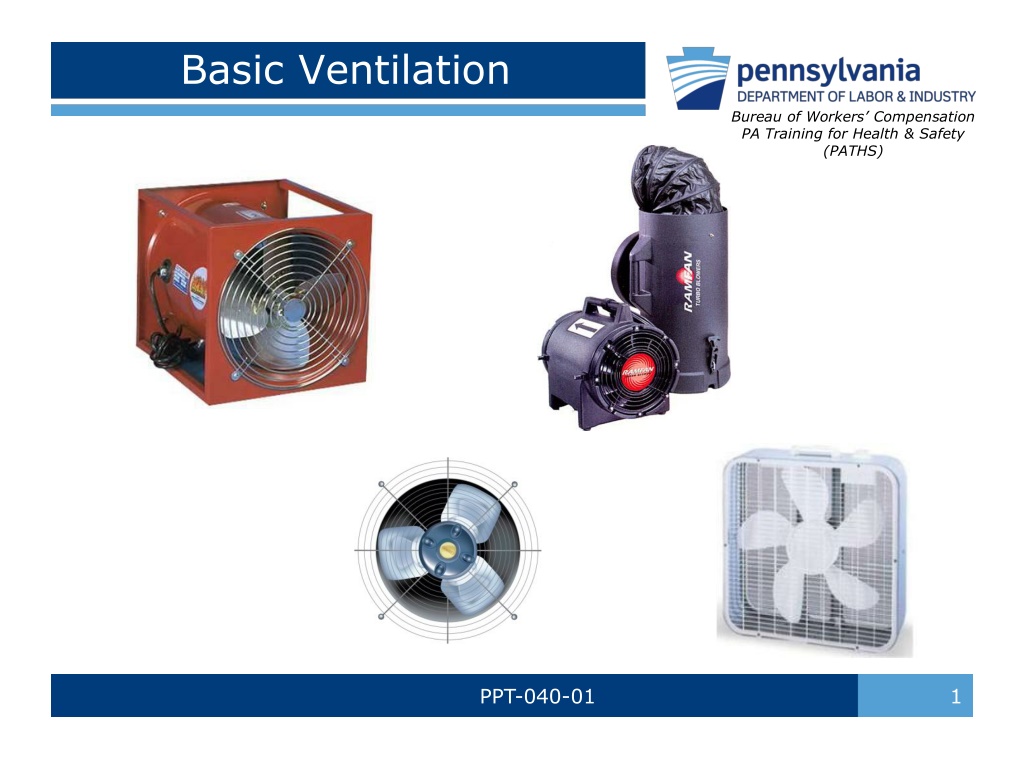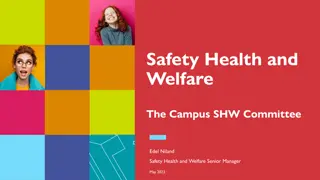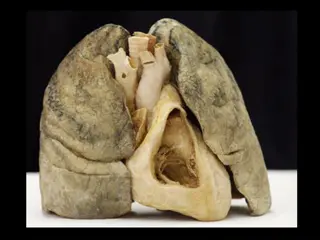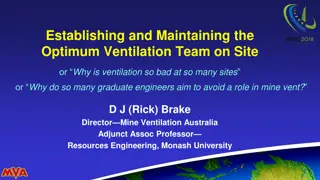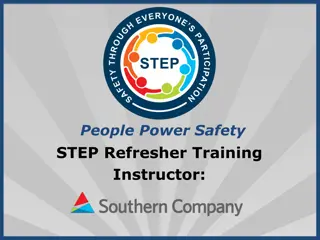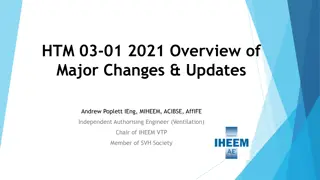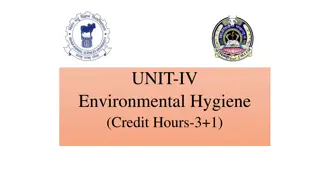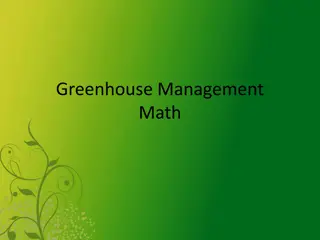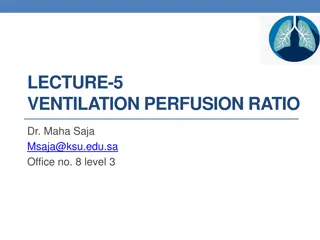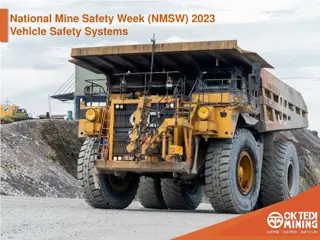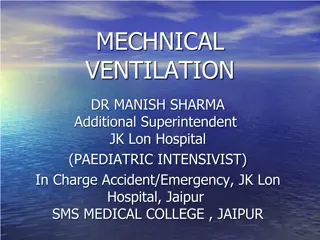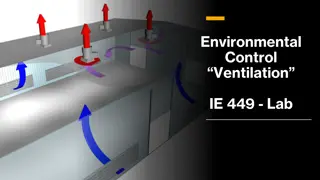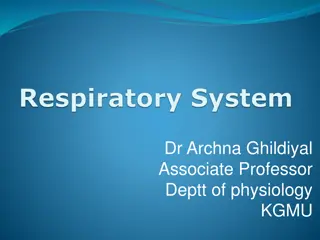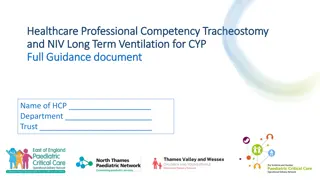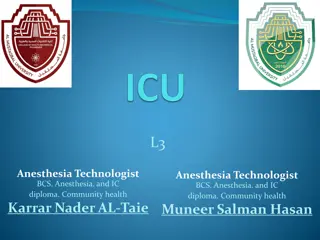Basic Ventilation Training for Health & Safety
This training presentation covers the basic concepts of ventilation, including reasons for ventilation, proper techniques, student objectives, types of ventilation, methods of ventilation, and ventilation safety precautions. Ventilation is crucial for maintaining high-quality indoor air, removing unpleasant odors, controlling hazardous substances, and improving air circulation. The course aims to educate participants on defining ventilation, applying it to various scenarios, determining the best ventilation methods, and ensuring safe practices in ventilation operations.
Download Presentation

Please find below an Image/Link to download the presentation.
The content on the website is provided AS IS for your information and personal use only. It may not be sold, licensed, or shared on other websites without obtaining consent from the author.If you encounter any issues during the download, it is possible that the publisher has removed the file from their server.
You are allowed to download the files provided on this website for personal or commercial use, subject to the condition that they are used lawfully. All files are the property of their respective owners.
The content on the website is provided AS IS for your information and personal use only. It may not be sold, licensed, or shared on other websites without obtaining consent from the author.
E N D
Presentation Transcript
Basic Ventilation Bureau of Workers Compensation PA Training for Health & Safety (PATHS) PPT-040-01 1
Course Goals To understand the basic concept of ventilation To understand reasons for ventilation To understand and apply proper ventilation techniques PPT-040-01 2
Student Objective Be able to define what ventilation is Be able to apply ventilation to different applications Be able to determine best method of ventilation Be able to move air PPT-040-01 3
Ventilation The process of "changing or replacing air in any space to provide high quality indoor air To: o Remove unpleasant smells and moisture o Introduce outside air, oImprove circulation, etc In firefighting, refers to a tactic of creating a draft to control the release of heat and smoke PPT-040-01 4
Reasons for Ventilation To remove or control: Hazardous/obnoxious odors Smoke & smoke odor Odors Asbestos Chemicals Gases Fumes Particulates See full size image Burned Popcorn-Ugh! Note: There are specific requirements for certain contaminants that require specialized training and equipment PPT-040-01 5
Types of Ventilation Vertical Moving air up and out Horizontal (lateral) Moving air out through windows & doors PPT-040-01 6
Methods of Ventilation Mechanical/Forced Fans Cooling Dilution Exhaust Circulation Filtration Scrubbers Exhaust Systems Chemical http://t0.gstatic.com/images?q=tbn:ANd9GcTl4u8BGlwPBz-7Af8UmWGuvcwEdzDD6aRSSOMwkj8RMd9DmTbfO3luIg PPT-040-01 7
How Air Moves Natural o No cost - Difficulty controlling - Increased time to utilize Mechanical/Forced o Easy to control direction - Need power source - Fumes - Cost PPT-040-01 8
Ventilation Safety Never use gasoline powered fans inside a building, structure or confined space Make sure fans are grounded If a flammable atmosphere exists make sure fans are intrinsically safe (i.e. explosion proof) Ensure area safe to set up equipment Trip hazards block off area, wires, fans PPT-040-01 9
Ventilation Steps Determine: What the problem is Smoke, odor, chemical, etc Where it is located What type of structure, building layout, occupancy What is the cause or source Origin of problem that needs ventilated Is it safe for me Main concern: can you do it safely without endangering yourself or others PPT-040-01 10
Ventilation Steps If unknown or dangerous: o Seek further assistance from Environmental Health & Safety (EHS) o Emergency Services (either public or private contractors may be considered an option) o 911 If material can be identified and handled in a safe manner proceed to the next step Follow company policy PPT-040-01 11
Ventilation Steps If you can start ventilation: Determine where you are going to direct the flow of air o Avoid contaminating clean areas o Avoid directing into high occupancy area o Will it be a nuisance or hazard to anyone down wind If odors or other conditions are too strong contact EHS for further evaluation PPT-040-01 12
Vapors Check the corresponding Safety Data Sheet (SDS) for the product being ventilated Review Vapor Density listed on SDS Vapor Density = measure of a vapor s weight when compared to air (air assigned value of 1) Denser vapors tend to sink to floor level, less dense vapors tend to rise to ceiling level PPT-040-01 13
Directing Air Flow Opening & closing doors Opening & closing windows Hanging plastic tarps in uncontaminated areas 14 PPT-040-01
Directing Flow A draft is better created with the flow coming in one direction and funneling out the opposite end Closing additional doors or windows will increase the flow of air out of room/area Additionally, remove any screens or curtains that may be in the way Make sure the wind is not naturally coming in the way you intend to exhaust the odor PPT-040-01 15
Directing Flow Close off open hallways or unaffected areas o Utilize plastic tarps or plastic sheets o Shower curtains with open hooks work o Tension rods o Duct tape o To meet standards, some items will require top to be more sealed up to prevent additional contamination PPT-040-01 16
Lets Ventilate How could you ventilate this area? Windows Stairs Use Natural, Mechanical, Combination of both Doors Stairs Stairs PPT-040-01 17 PPT-040-01 17
Example of Stricter Requirements Asbestos Asbestos Training Required Do not disturb or enter Required items: o Signage o Negative air machines o Air lock o Restricted entry o PPE (respiratory) PPT-040-01 18
Evaluate the Area Evaluate before allowing occupants (e.g. students, staff, etc.) to return Senses may not be the best testing factor based on what you ventilated for o Use meters if necessary o Utilize someone not on site previously (some items may desensitize your ability to smell them) PPT-040-01 19
Summary Ventilation is not difficult, but does take some thinking as to where to move contaminated air Never move contaminated air into non- contaminated areas If necessary, move occupants out of an area before ventilating Determine the best method for effective ventilation If material involved is hazardous or you re not sure: stop, consult EHS for instructions PPT-040-01 20
Contact Information Health & Safety Training Specialists 1171 South Cameron Street, Room 324 Harrisburg, PA 17104-2501 (717) 772-1635 RA-LI-BWC-PATHS@pa.gov Like us on Facebook! - https://www.facebook.com/BWCPATHS PPT-040-01 21
Questions PPT-040-01 22
